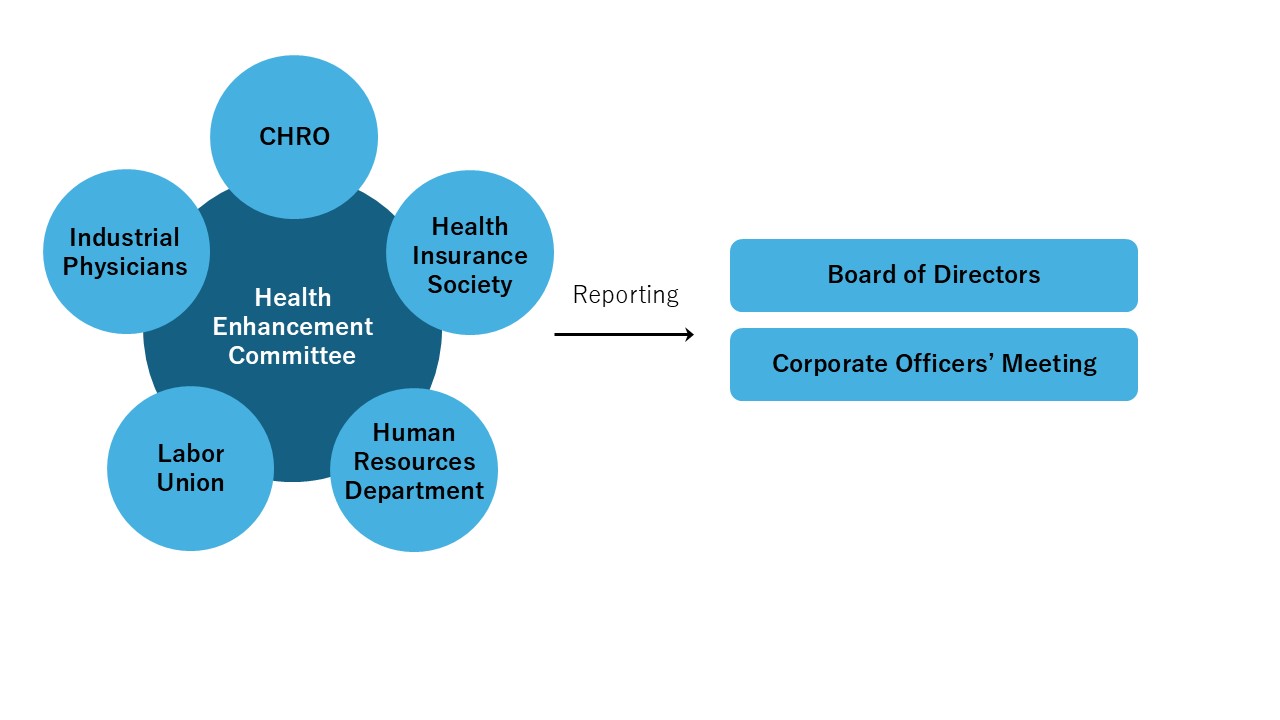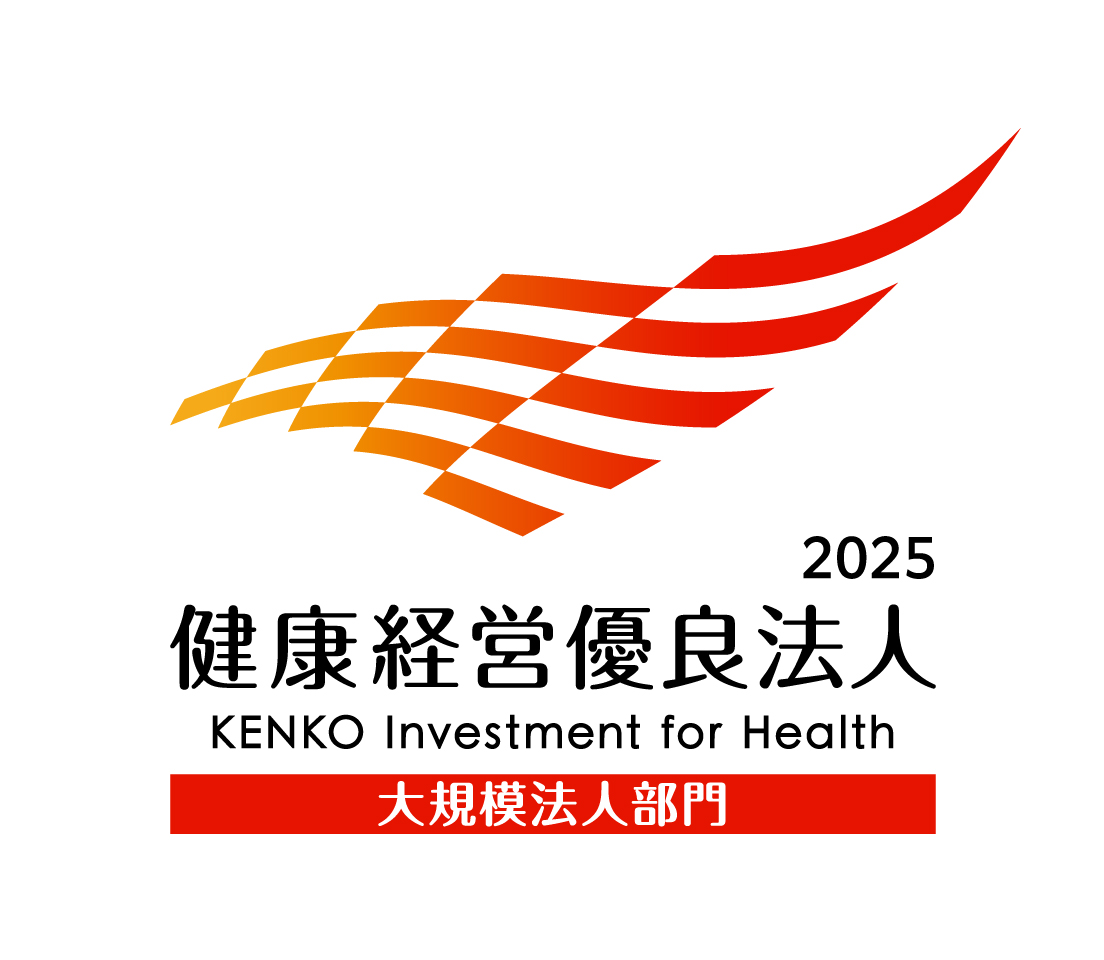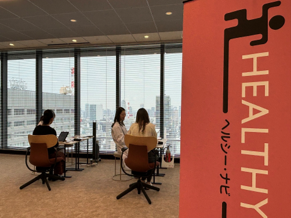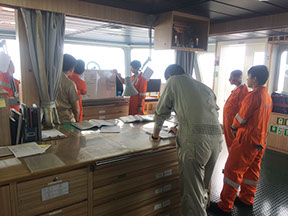Our corporate principle is to help enrich the lives of people as a logistics company rooted in the shipping industry, and we conduct our business activities accordingly. Crucial to realizing this principle is providing safe and optimized services which calls for us to constantly maintain the physical and mental health of the individuals involved in our business and to help them fully demonstrate their potential abilities. We believe that health is the source of individual happiness and is indispensable for realizing the Group’s principle. As the health of each and every Group employee is of paramount importance, we will work hard to maintain and enhance the health of employees in cooperation with health insurance associations, labor unions, and clinics (occupational health physicians).
Managing Corporate Officer
CHRO Shinya Tamaki
|
Priority initiatives |
Targets |
|
Annual health check rate |
100% |
|
Stress check examination rate |
90% or higher |
|
Average monthly overtime working hours |
Whithin 30 hours |
Human Resources Group will take the lead in addressing the above targets by the end of fiscal year 2025.
Eradication of occupational accidents is fundamental to safe and economical operations. In order to raise each member’s safety awareness and ensure safety on board, the Company has introduced safety experience training and/or hazard prediction training. The Company also gathers examples of incidents, through near-miss reports, etc., that have not been tangible but have posed potential risks. Such information is shared internally to help enhance safety in navigation and cargo operations.
In addition, the “K” LINE Group strives not to violate the fundamental rights of seafarers on board by complying with the Maritime Labour Convention, 2006 (MLC, 2006). The convention was adopted in February 2006 by the International Labour Organization (ILO) as a comprehensive international employment convention containing seafarers’ fundamental rights, as set out below:
1. Freedom of association and the effective recognition of the right to collective bargaining;
2. the elimination of all forms of forced or compulsory labour;
3. the effective abolition of child labour; and
4. the elimination of discrimination in respect of employment and occupation.
We shall comply with this convention across our entire fleet so as not to infringe on the fundamental rights of our seafarers.
We strive to continuously improve health and safety at onshore offices and bases and the mental and physical health of our employees. The Company established the Health Enhancement Committee, chaired by CHRO, which functions as a health committee, as required by the Industrial Safety and Health Act. We share information by regularly communicating the matters discussed and reported at these committee meetings to the Board of Directors and Corporate Officers’ Meeting.

Based on legal standards, we have set up a seafarers’ health and safety system, with the Seafarers’ Health and Safety Committee onshore and the Onboard Health and Safety Committee on our vessels. We promote operational health and safety in cooperation with ship management companies and relevant departments. The Onboard Health and Safety Committee studies and deliberates how to best maintain seafarers’ living and working conditions on board and prevent occurrences or recurrences that may affect seafarers’ health, as well as provide proper training in health and safety. We were first certified as an excellent company for seafarers’ industrial accident prevention by the Ministry of Land, Infrastructure, Transport and Tourism in 2008 and have maintained this certification to this day.

We have been recognized under the Certified Health and Productivity Management Organization Recognition Program, designed and promoted by the Japan’s Ministry of Economy, Trade, and Industry (METI) and the Nippon Kenko Kaigi, to honor companies that practice good health management. Recognition as a 2025 certified Health & Productivity Management Outstanding Organization marks the sixth year in a row and the seventh time overall that we have won in the large enterprise category.

Our employees must receive a physical examination once a year, and we assist with the costs for those who wish to receive a second examination. We have a medical clinic at our head office in Tokyo that provides medical examinations, and employees can visit a doctor when they are feeling unwell. In addition, we have a “health keeper” who provides massages for employees to relieve them and help them recover from fatigue. Thus, we proactively support our employees’ health management.
We provide dental checkups for employees once a year in our company conferance room.
As a part of mental health care, we have adopted an internet-based stress check program that employees can use to manage their mental health and improve their stress tolerance. In addition, we hold annual seminars on mental health for executives and employees at the Tokyo head office. Furthermore, we have put in place a range of support systems including mental health consultations with a medical specialist and the Employee Assistance Program (EAP), which provides external counselors to tend to employees’ physical and mental health conditions.
We have joined the promotion partners of the "Corporate Action for Promoting Cancer Control", which is recommended by the Ministry of Health, Labor and Welfare in collaboration with private companies. We provided e-learning program to all employees, focusing on cancer prevention and support for a good work-life balance. The program aimed to educate employees about cancer, and awareness of the need for regular cancer screenings has increased.

To promote employee health management and raise health awareness, we regularly hold health measurement events. In addition to measurements such as estimated vegetable intake and vascular age, a nutrition consultation corner is set up where participants can receive advice on health-conscious meal planning and nutrition-based consultations.
The walking event is held annually for employees insured under the Kawasaki Kisen Health Insurance Society and their families. It is an initiative that allows participants to build exercise habits in a fun way, encouraging each other with friends from the Company or colleagues from the same department, and challenging families together to achieve average step-count goals.
To reduce overlong working hours, we are implementing training for managers on the relationship between overwork and health and reinforcing measures to prevent employees from becoming overworked. In terms of managing working hours, when an employee does any work outside of regular working hours, an email is automatically sent to their superior after a fixed amount of time has elapsed. This system enables managers to recognize employees with overlong working hours in a timely manner and respond quickly, such as by reducing their workload. Additionally, we endeavor to reduce overlong working hours by managing the overtime work results for each employee on a daily basis. We will carry out interviews with employees, when necessary, who have the most overtime work Groupwide, as well as with their managers. Furthermore, reporting the average working hours for each department to the Executive Officers’ Meeting on a monthly basis enables us to work together with management and make even more effective improvements.
We support medical examinations and vaccinations for employees who are transferring overseas, as well as for their family members. Once they have been posted overseas, employees can also receive support from our partner emergency medical assistance companies.
Our company has formulated a “Pandemic Influenza Response Operation Plan” to continue the business even in an event of pandemic influenza outbreak.
While at sea, we conduct pre-work/tool-box meetings every morning to help prevent occupational accidents. We also hold monthly working management committee meetings to ensure that we are thoroughly prepared in the event of an emergency and dangerous situations on board. In addition, we regularly distribute letters from our marine safety supervisors to all vessels to keep our seafarers mindful and aware of issues related to occupational accidents, health, and safety.
In addition, our seafarers are required to attend health- and safety-related training.

To prevent overwork at sea, we have introduced a labor management and reporting system to consider appropriate distribution of tasks so that our seafarers do not take on excessive workloads. We also arrange ship operational schedules and increase the number of personnel on board as necessary to prevent unreasonable working situations. Moreover, we have an online consultation system with occupational health physicians for crew that have become fatigued after working more than the prescribed hours.
Since it is not possible to visit onshore medical facilities while at sea, it is extremely important that our maritime officers are both physically and mentally healthy. They are required to undertake a medical examination prior to embarkation, as well as annual examinations covering items beyond those mandated legally. We keep secure records of medical examination data at the Company in order to refer to and understand the health status of our various maritime officers.
Regarding the mental health of maritime officers, in addition to training courses conducted by externally qualified people and annual stress checks, marine safety supervisors regularly announces safety-related information and we have a system in place to collaborate with our own industrial physicians.
Seeking to improve the overall health and safety of our seafarers, we have assigned marine safety supervisors to our Maritime Strategy Group. The marine safety supervisors visit the ships when at port and provide guidance related to health and safety management. During such visits, we also conduct individual interviews to ensure our seafarers are in good mental health.
Unlike regular workplaces, our maritime officers experience closed living conditions while working at sea. Once on board, however, they are normally at sea for six-month periods. For this reason, we always have HR personnel conduct telephone interviews with our seafarers to gain feedback focusing on life at sea, personal relationships, and anything else they feel is worth mentioning, particularly after disembarkation. When deemed necessary, moreover, we conduct face-to-face interviews. Through these actions, we strive to alleviate the concerns of our maritime officers while monitoring the condition of Company workplaces.
Maintaining safety in navigation and cargo operations is the most important duty for maritime officers on board our vessels. However, they also take responsibility for numerous administrative tasks, including procedures that accompany entering and exiting ports. We are working on the IT development and digitalization of our vessels, installing high-spec equipment already compatible with advancements in IT, and promoting the introduction of a communications infrastructure capable of handling large amounts of data to reduce workloads.
To achieve a safe, healthy, and comfortable work environment, the following companies in the “K” LINE Group have acquired ISO 45001 certification.
Out of the 278 “K” LINE Group companies, 3 companies, which accounts for 1.1%, have obtained the certification (as of December 31, 2024).
・K Line Container Service (Thailand) Ltd.
・Bangkok Cold Storage Service Ltd.
・ "K" Line Logistics (Australia) Pty Limited
We implement a variety of initiatives aimed at improving employee work-life balance and productivity.
We recognize the effectiveness of teleworking from the perspective of supporting work–life balance, in addition to the importance of face-to-face communication. We have developed an IT infrastructure and security platform that enables safe and smooth teleworking by introducing communication tools, strengthening endpoint security, and enhancing network lines.
To improve the efficiency of online and hybrid meetings, we have also created an environment that enables seamless integration of face-to-face and online interactions by increasing online meeting equipment in conference rooms, adding displays in work areas, and installing online meeting booths. Furthermore, we are exploring new workstyles that combine free analog thinking with efficient digital data storage and searchability by introducing digital whiteboards, interactive projectors, and touch-panel computers.
We are also promoting workstyle reforms for onboard operations, strengthening the digitalization of information, business processes, and vessels to achieve timely information sharing between onshore and offshore operations and create a safe, comfortable working environment for seafarers in order to deliver higher quality marine transportation.
We are advancing the introduction of the latest digital equipment in conference rooms and collaboration spaces as only part of the process while continuously working through the PDCA cycle, which reviews administrative processes by utilizing digital technology, with actual work sites as our starting point. Through RPA*1 and citizen development*2 using Microsoft Power Platform in several departments, we are steadily automating routine tasks. We are also improving operational efficiency in information gathering, analysis, report creation, and other areas through the secure internal use of ChatGPT and utilization of internal data in generative AI.
*1 RPA stands for robotic process automation, an approach to work automation using robots that work within the parameters of created scenarios.
*2 Citizen development refers to employees who develop systems without formal programming training.
|
Items |
Unit |
FY2022 |
FY2023 |
FY2024 |
|
|
Stress check program |
Stress Check Examination Rate |
% |
88 |
92 |
97 |
|
Work engagement and percentage of employees with high levels of stress |
Comprehensive health risk*1 |
‐ |
84 |
82 |
87 |
|
Percentage of employees with high levels of stress*2 |
% |
9.4 |
8.8 |
8.5 |
|
|
Work engagement*3 |
points |
2.6 |
2.6 |
2.7 |
|
|
Presenteeism*4 |
points |
4.1 |
4.0 |
4.0 |
|
|
Annual paid leave taken |
Average days of annual paid leave taken |
days |
9.9 |
10.1 |
10.1 |
|
Average of seven days’ vacation taken *5 |
days |
4.8 |
4.9 |
5.3 |
|
|
Managing Overtime Working Hours |
Overtime working hours (monthly average)*6 |
hours |
6.8 |
7.4 |
7.5 |
|
Annual health check |
Participation rate |
% |
99.7 |
99.8 |
99.8 |
*1 Comprehensive health risk is derived from the scores of the following four factors: work burden (quantity), discretion over work, support from superiors, and support from coworkers. It is a quantification of the degree of health risk that occurs due to the work environment. The national average is 100, and the lower the number, the lower the risk.
*2 Employees with high levels of stress were evaluated based on the average score of mental and physical stress response, work stress factors, and support from colleagues and superiors, converted into a five-point evaluation. The national average is 10%.
*3 Work engagement is an indicator of how energized, proud of, and enthusiastic about their work employees are. The scores given to each response to the following statements are as follows: “My work gives me a feeling of personal accomplishment” and “I would recommend this company to people I know as a great place to work”: Yes = 4 points, Most of the time = 3 points, Sometimes = 2 points, and No = 1 point. The score shown above is calculated based on the average score of all examinees. The national average is 2.5 points.
*4 Presenteeism means working while suffering from some form of health issue, resulting in low productivity. (Japan has an average of 3.9 out of 5.0 points. A low number equals low productivity.)
(*1-*4 Scores taken from The Brief Job Stress Questionnaire is scored)
*5 In a fiscal year, up to seven days of non-statutory leave are available.
*6 Full-time employees only; excludes transferees and those on reduced working hours.
|
Item |
Unit |
FY2021 |
FY2022 |
FY2023 |
FY2024 |
|
Number of occupational accidents (*1) |
Cases |
0 |
1 |
1 |
1 |
|
Number of fatal occupational accidents |
Cases |
0 |
0 |
0 |
0 |
|
Number of accidents requiring leave(*2) |
Cases |
0 |
0 |
0 |
1 |
|
Lost-Time Injury Frequency Rate (LTIFR) (*3) |
- |
0.00 |
0.60 |
0.57 |
0.55 |
*1 Excludes accidents while commuting
*2 Number of injuries/illnesses caused by occupational accidents and requiring one or more days of leave
*3 (Number of lost-time injuries) / (Total hours worked in accounting period) x 1,000,000
Scope of coverage: onshore employees and seafarers of Kawasaki Kisen Kaisha, Ltd.
